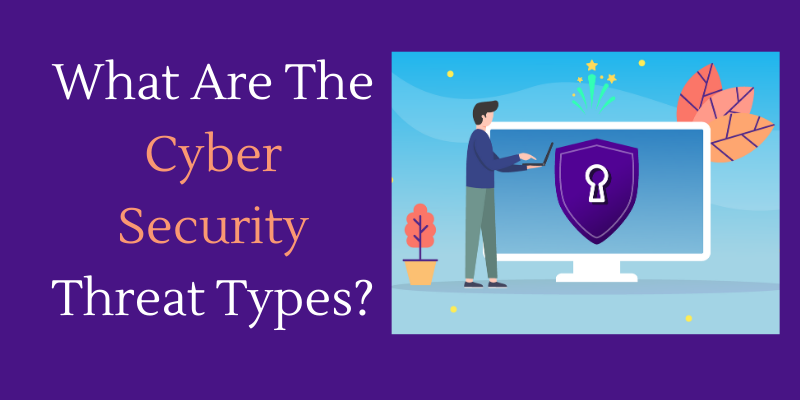What Are The Cyber Security Threat Types?
Cybersecurity is the process of defending against hostile assaults on systems that are connected to the internet, including computers, servers, mobile devices, electronic systems, networks, and data. A cybersecurity threat is considered a malicious action to steal or corrupt data, obtain access to a network, or disturb digital life. In this blog, we have discussed the cyber security threat types, Join the Cyber Security Course In Chennai offered by FITA Academy. The following risks exist today, according to the cybercommunity:
1)Malware
Malicious software, also called malware, is the most typical form of online attack. It is used by a hacker or cybercriminal to damage or interfere with a legitimate user’s system. The following are significant malware subtypes that the hacker has produced.
2)Phising
In phishing, a cybercrime, the sender makes it appear like they are from a reliable company, such as PayPal, eBay, a financial institution, or friends and coworkers. To convince a target or target to click on a link, they contact them via phone, email, or text message. This link will redirect them to fake websites where they will be asked to enter sensitive information such as usernames, passwords, social security numbers, banking and credit card information, and personal information. Additionally, malware that enables remote device control will be installed on the targeted devices by clicking the link.
3)Man In The Middle Attack
A cyber threat called a man-in-the-middle attack is a type of eavesdropping assault that involves a cybercriminal intercepting a conversation or data transfer between two people. When cybercriminals insert themselves into a two-way conversation, they appear as legitimate participants, can obtain sensitive information, and can respond in various ways. This attack’s primary goal is to access our company’s or customers’ data. An unencrypted Wi-Fi network, for instance, would allow a cybercriminal to intercept data travelling between the target device and the network.
4)Distributed Denial Of Service
Cybercriminals interrupt the usual traffic on targeted servers, services, or networks by sending Internet traffic to respond to legitimate requests for the target or its surrounding infrastructure. This is a sort of cyber threat or malicious effort. Here, multiple IP addresses are making requests, which could render the system unworkable, overwhelm its servers, cause them to briefly go offline, slow to a crawl, or stop an organisation from performing its core duties.
5)Brute Force
In a cryptographic hack known as a brute force attack, all conceivable combinations are tried until the correct data is found. Cybercriminals use this technique to gain private information from targeted passwords, login credentials, encryption keys, and Personal Identification Numbers (PINS).
Thus, some cyber security threats are malware, phishing, man-in-the-middle attack, distributed denial of service and brute force. To know more, join the Cyber Security Online Course to learn at your own pace. Enrolling in the Best Training Institute In Chennai can give you the skills and knowledge to excel in this field.



